
What is a Terrarium?
A terrarium comprises of small, decorative plants growing in a confined environment.
According to ‘Hande SANEM Çinar’ (Published in: Miniature Garden: An Analysis of Terrarium), Dr. N. Ward discovered the terrarium in London during the 1840s. These terrariums provide a small environment that allows people who have lost their connection to nature to breathe in their apartments.
Terrarium containers are typically transparent, may be open or closed, ensuring an opening big enough to access the plants inside. Also, labelled as mini tabletop gardens. They are low maintenance, space-efficient, alluring, and a great way to perk up your indoor space.

Plants are known to create a soothing environment, serve a practical and aesthetic purpose when placed indoors. An indoor mini garden can work wonders on your general happiness, relieve stress, anxiety, improve mental health, and aid healing.
Caring for a living thing is always gratifying and gives us a purpose.
We reap the benefit tremendously from fostering a strong connection with nature. Yet our connection to nature seems flimsy our children can name more cartoon characters than wildlife species today. The count of people who stop to watch a sunset, or spend time walking tree lined streets is consistently dropping.
Whether you live in a small apartment or a large house, you shouldn’t deny the fact that plants are essential for our health and well-being. Introducing terrariums into your home will rejuvenate your souland create a soothing living space. Plants are a friendly way to jazz up even the most boring space. And we believe that everyone should test their green thumb once by setting up terrariums. Therefore, Gharpedia is again here to help you with tips on how to make a terrarium at home. But, before we learn the steps to make a terrarium let us first know various types of terrariums.
A wide variety of terrariums are available. Some basic types of terrarium are:
Types of Terrariums
Closed Container Terrariums:
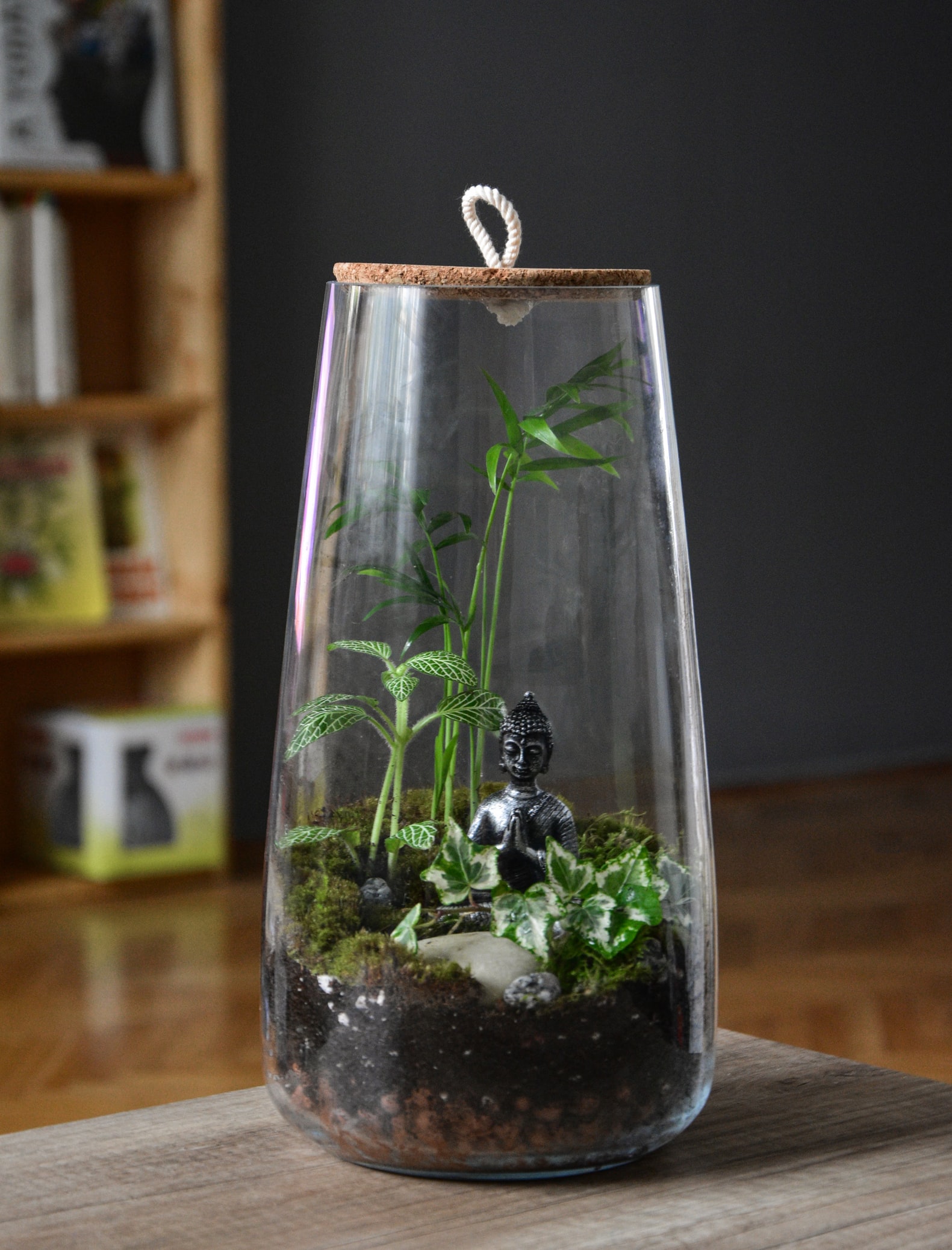
A closed or sealed terrarium is best for plants that require humidity to flourish. They are self sufficient and do not need direct sunlight. The plants release water vapour which gets trapped in the vessel and fall back down to the substrate, maintaining the built-in water-cycle. Favored plant choices include mosses, ferns, ivy.
Open Container Terrariums:
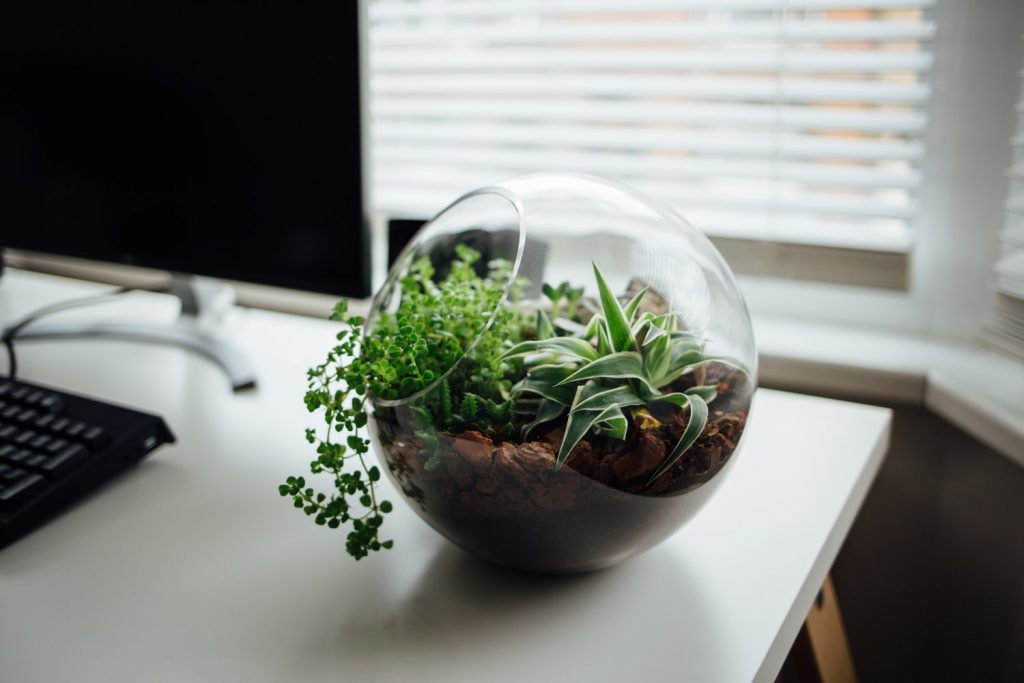
As the name suggests, it doesn’t require a lid. It is well-suited for a wide range of plants. They need watering more frequently, say once or twice a week. Overall humidity is low and you have increased control over the moisture levels. Director even indirect sunlight will do. Suitable plants include cacti, aloe, succulents, and air plants.
Dish Container Terrariums:

They are most convenient to create and maintain. It rarely requires watering. When planting air plants, you may eliminate drainage and substrate layers. Any lighting does good to this terrarium. It allows you to grow a variety of plants that may not thrive in the outdoor environment.
Before you fold up your sleeves and start making a DIY terrarium, there are some essential supplies you should know. Whether it’s a small, or medium, or a large terrarium, resources and the steps remain the same only the size of the container, man-hours invested in this beautiful creation, and the quantity of supplies differ.
Basic Supplies for Making a Terrarium
Transparent Vessel to Make Terrarium:
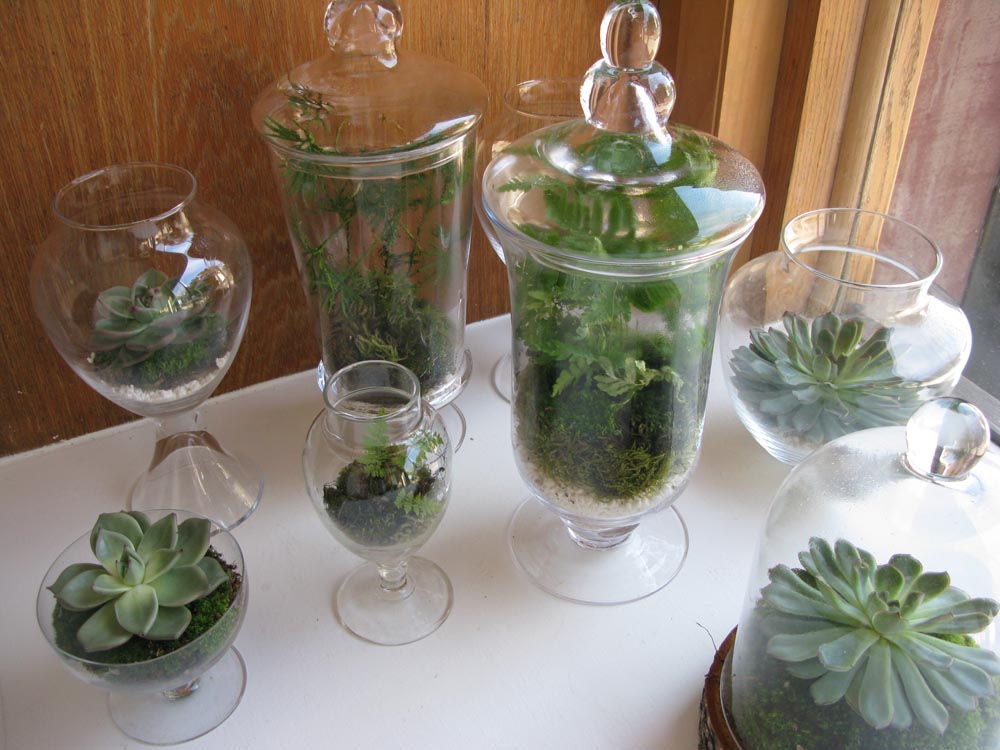
You’ll need a transparent vessel, a glass or a plastic vessel to allow the light to enter. Avoid using colourful containers as the chemicals may hamper the growth of your plants.
Gravels or Pebbles for Making base of Terrarium:

You need a drainage system for your terrarium, and stones or pebbles serve the purpose. These will form the base and provide a defense mechanism against any excess water which may saturate in the soil and cause rot.
Activated-Charcoal:
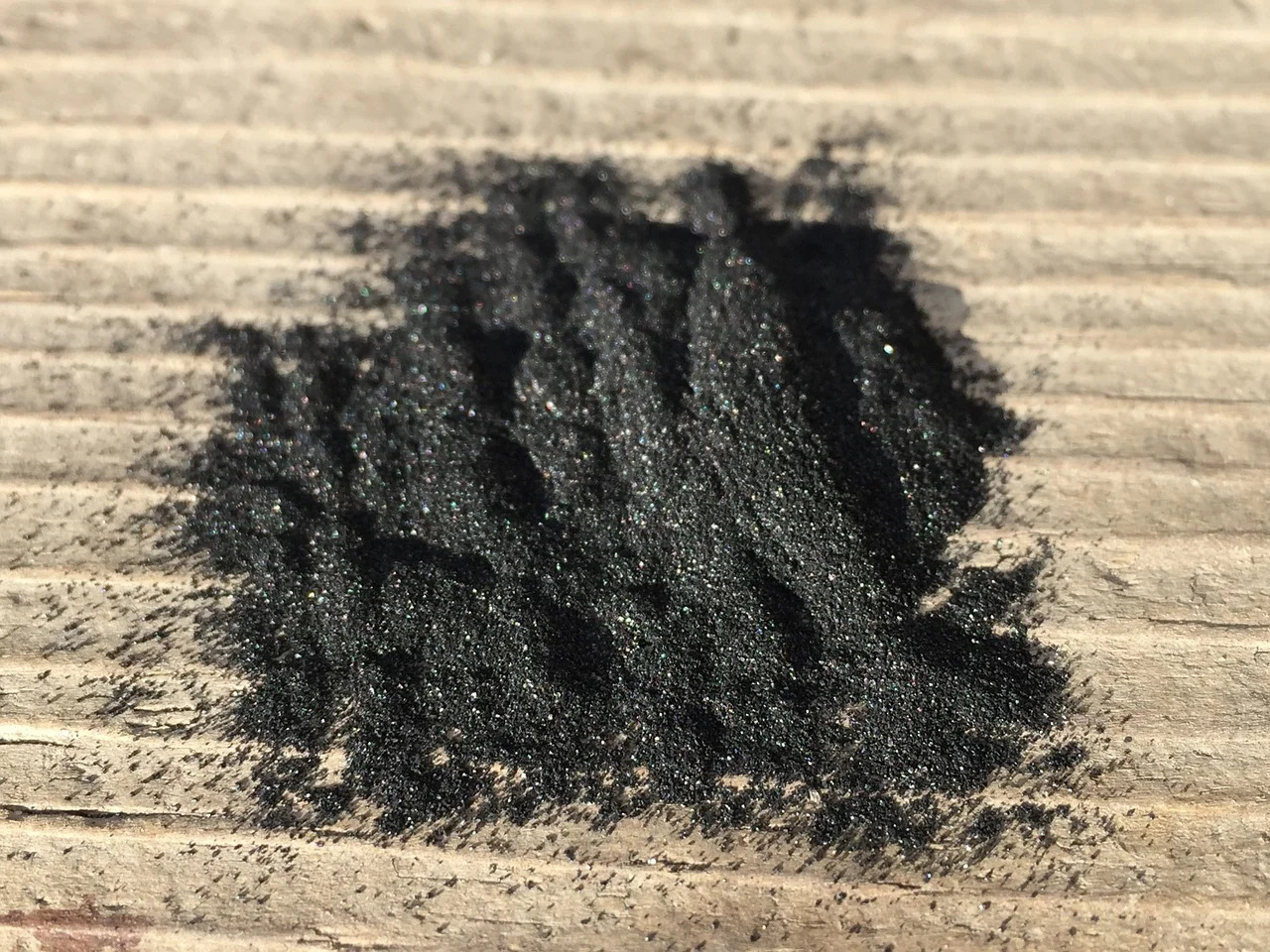
A wafer-thin layer of activated charcoal is necessary to combat any bacterial growth and nasty smell. It helps stagnant water to escape the reach of flora roots in the potting layer. It also ensures the stability of the humidity level inside the container.
Potting Soil:

Potting soil layer is the most important of all layers. Any soil would work but, for cacti and succulents, you would want to use some special mixes. Also, there is packaged potting soil available specifically for terrariums.
Plants for Terrarium:
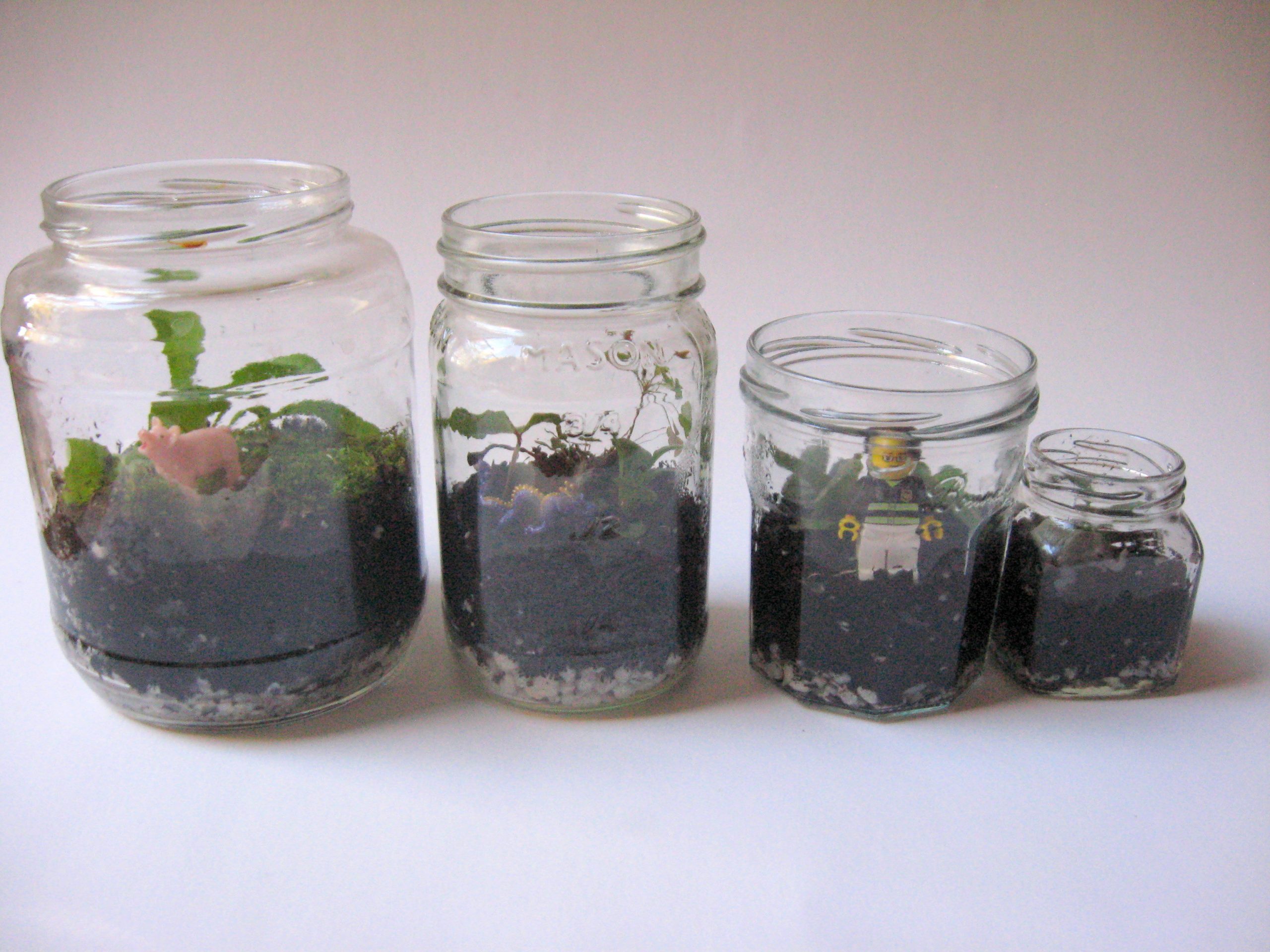
It is the greenery part you are looking for, the center piece of the terrarium. Choose pocket sized plants from the wide variety available. Also, choose the container accordingly.
Do you know what container gardening is? If not, then do not worry. Here is the detailed blog. Have a look.
Terrarium Tools
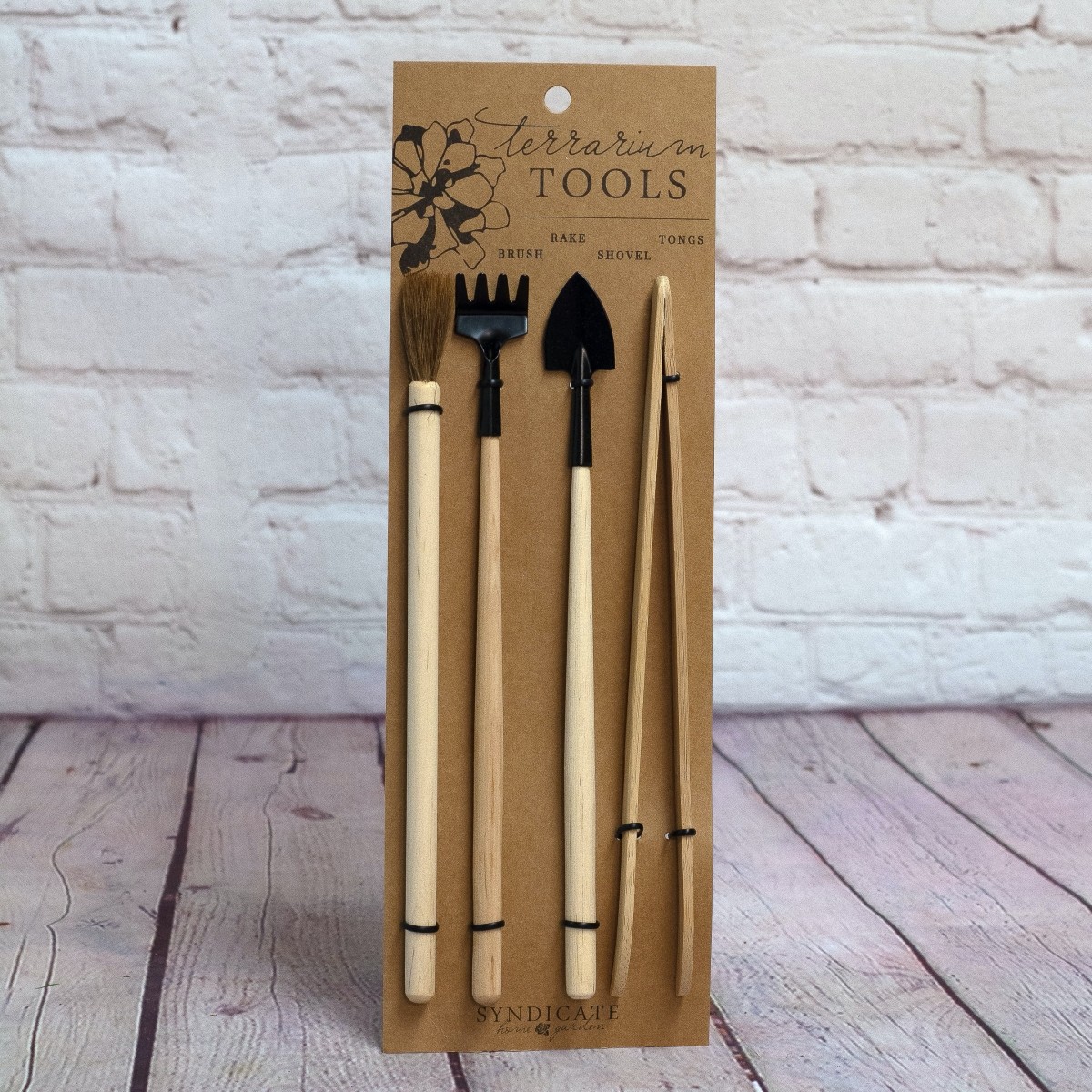
Small tools like miniature rake, shovel, tweezers, and brush are needed to set up a terrarium.
Now, when you have all the material with you, let’s gear up and drive through the journey.
Steps to Make a Terrarium at Home
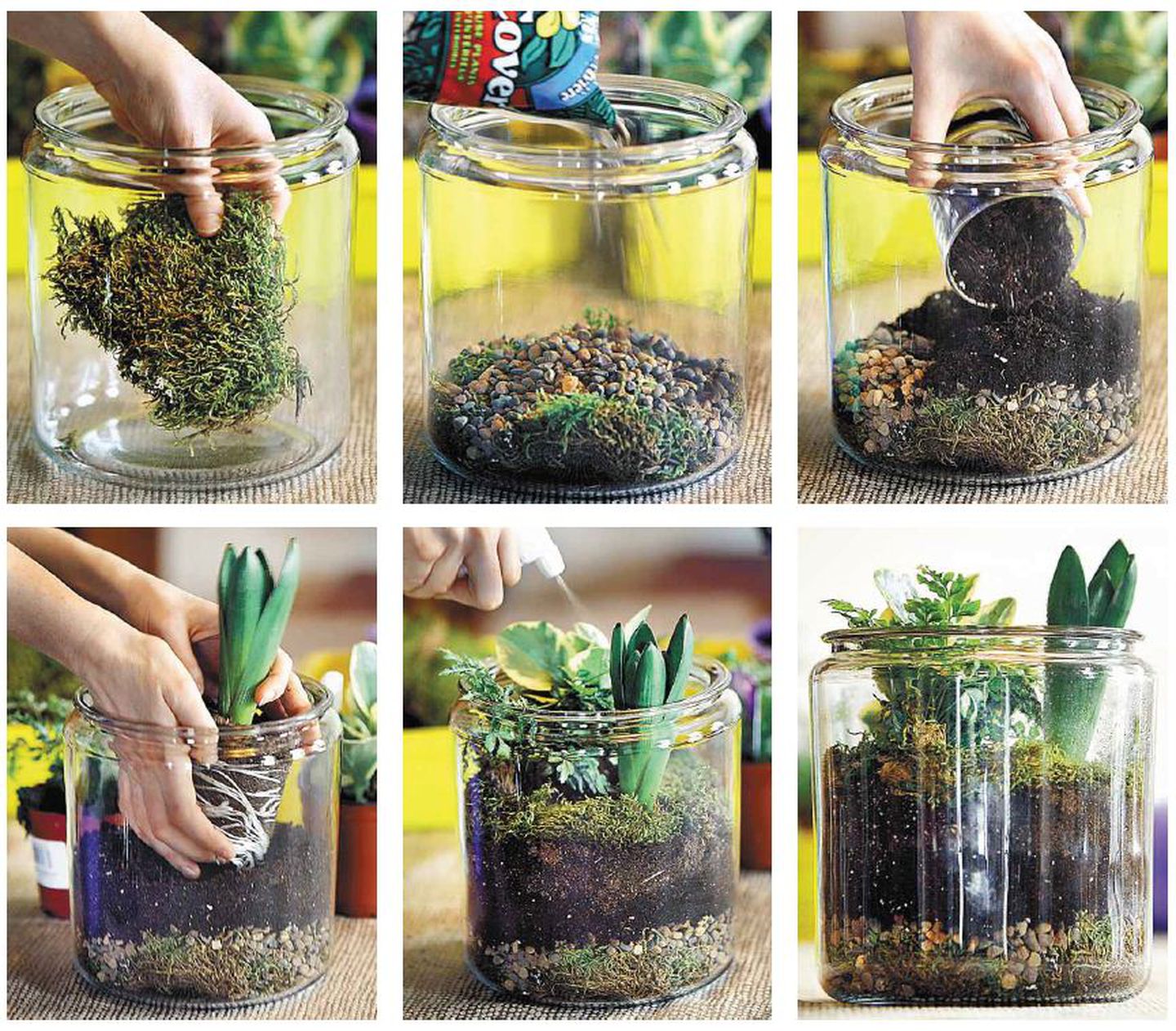
Step 1: The first Step to Make a Terrarium is to Place Gravels or Pebbles in Vessel.
Place a handful of gravels or pebbles to form the base for your terrarium. For small terrariums, keep it 1 cm thick, for the medium: 1.5-2 cm, and for larger ones: 2.5 cm. It will provide the drainage system to the terrarium.
Step 2: Put the Layer of Activated Charcoal
Top the pebbles with a wafer-thin layer of activated charcoal. It will combat any bacterial growth and nasty smell.
Step 3: Placing of Potting Soil Layer
Now, work on the potting soil layer. Any potting soil mix would work. If you’re interested in planting cacti and succulents, use specialized-mixes. This layer should be thick enough to settle the plants. For small: 1 inch, for the medium: 1.5 inches, for large: 2.5 inches.
Step 4: Add Your Plant
Now add your favorite plants. Make a hole in the soil, loosen the roots and settle the plant into the soil. Try out different arrangements. Put on gloves when working with spiky plants.
If you have indoor plants in your home and want to know how to take care of them. Go through this article.
Step 5: Decorate the Top of Terrarium with the Pebbles
After all of your plants are arranged, you can decorate the terrarium by placing a layer of pebbles (or aquarium gravels) at the top. It takes hardly an hour to create your terrarium. Although if you plan on making a complex one, it may take more hours. One thing is for sure that you are going to love this magnificent creation.
But your work doesn’t end here. Once you are all set, you need to look after it. Water and light should neither be excessive nor deficit. Terrariums should get enough bright, indirect sunlight to bloom.
Some expert tips on how to build your own terrarium and make your very first attempt go green
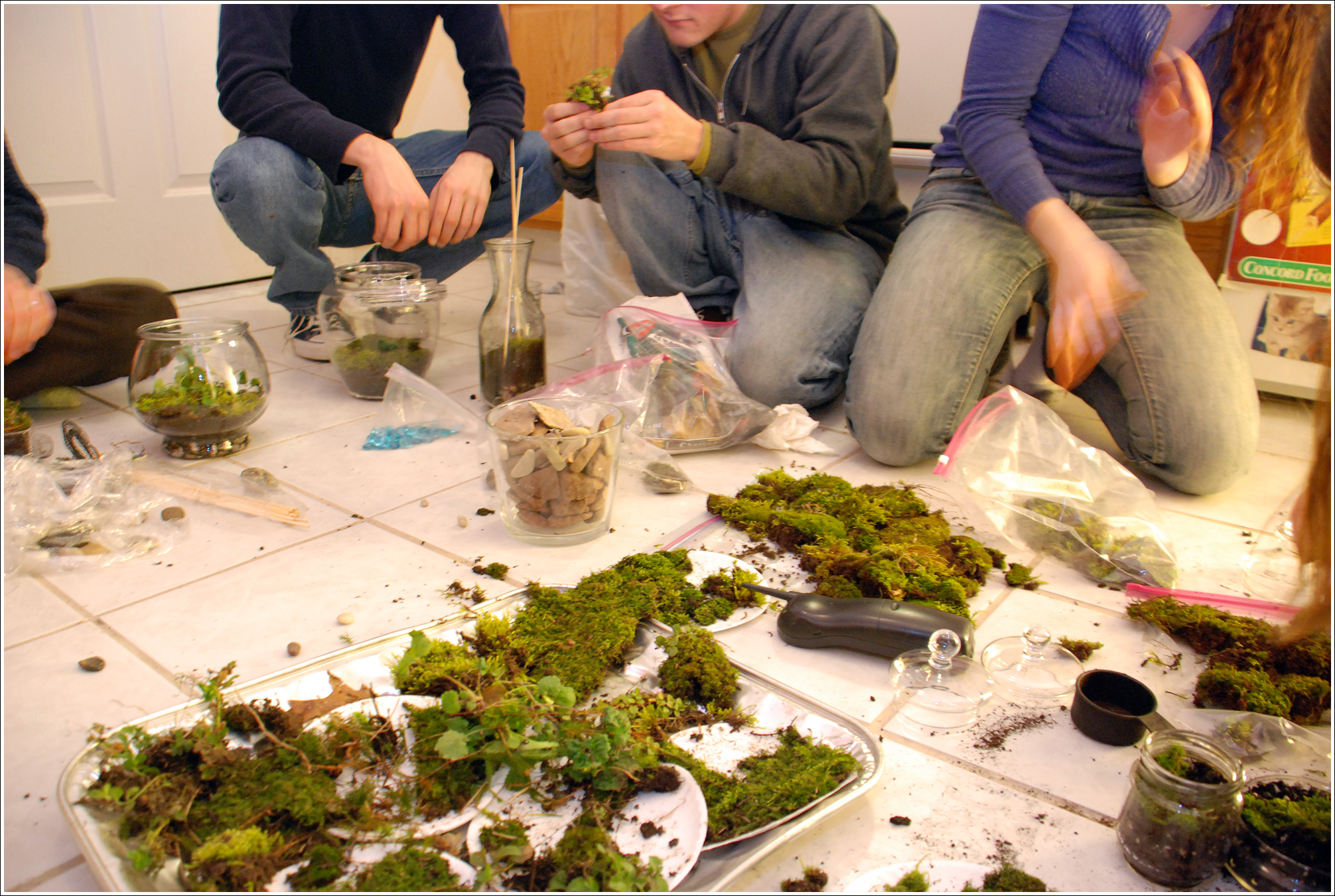
- Choose between plastic and glass container. Glass is cheap but limited in shapes and size. A plastic container is durable but may tarnish over a period of time.
- Closed, open or dish container, what to choose depends on your choice of plants.
- For pebbles, small beach pebbles do well. Also, you can reuse small pieces of broken pottery, artificial greenery from old bouquets, small figurines, plastic cake toppers, shells or decorative rocks.
- You should find the right soil for your plants and make sure it’s high in organic matter.
- All the layers together should cover-up about one-third height of your container. The soil layer should be the thickest and fill in any gapes so that there are no air pocket.
- Make sure you choose plants that will work in your space, considering the fact of whether you’ll have abundant natural sunlight to feed the plants, Favoured plants for terrariums include mosses, African violets, Creeping Fig and Baby’s Tears. You can keep the plants healthy by mimicking their natural environment.
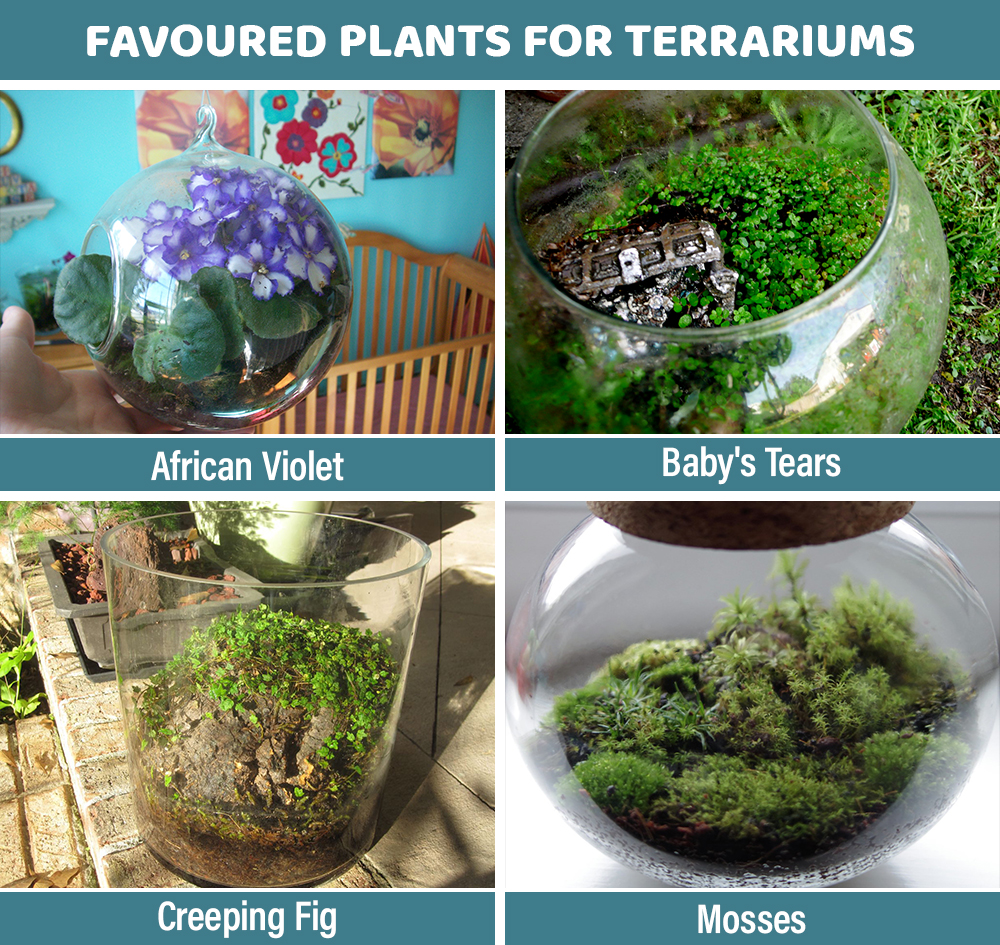
- To prevent overcrowding, choose slow-growing and pint-sized plants.
- Use a spray bottle to lightly moist the plants and soil. For an open terrarium, water your plants once a week. The soil should remain barely moist. If your terrarium is closed, it should rarely need watering. Exposure to direct sunlight can cook/burn your plants.
- To prevent rotting, carefully prune the plants when they start to get crowded. We hope this blog on how to make a terrarium will help you to make your home environment greener. Just like a terrarium, an indoor water fountain also has an impact on your health and well being. Know more from here.
Image Courtesy: Image 11, Image 12
Author Bio
Anshu Sachdeva – Anshu Sachdeva is the founder and business head of boutique research and content firm based out of India. She has

































